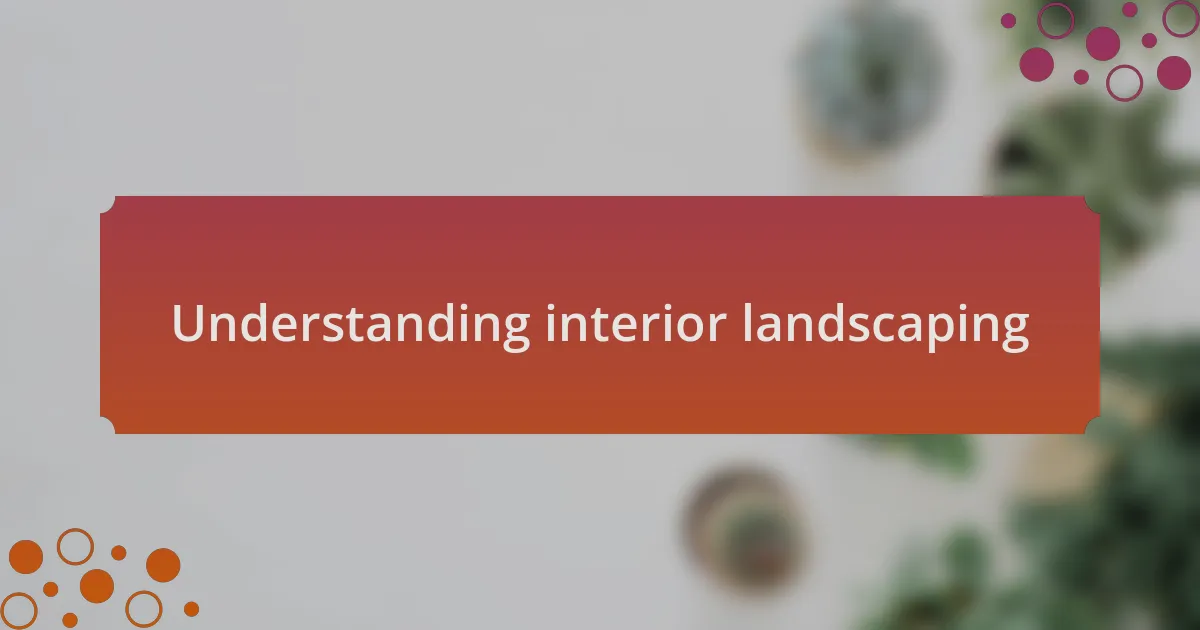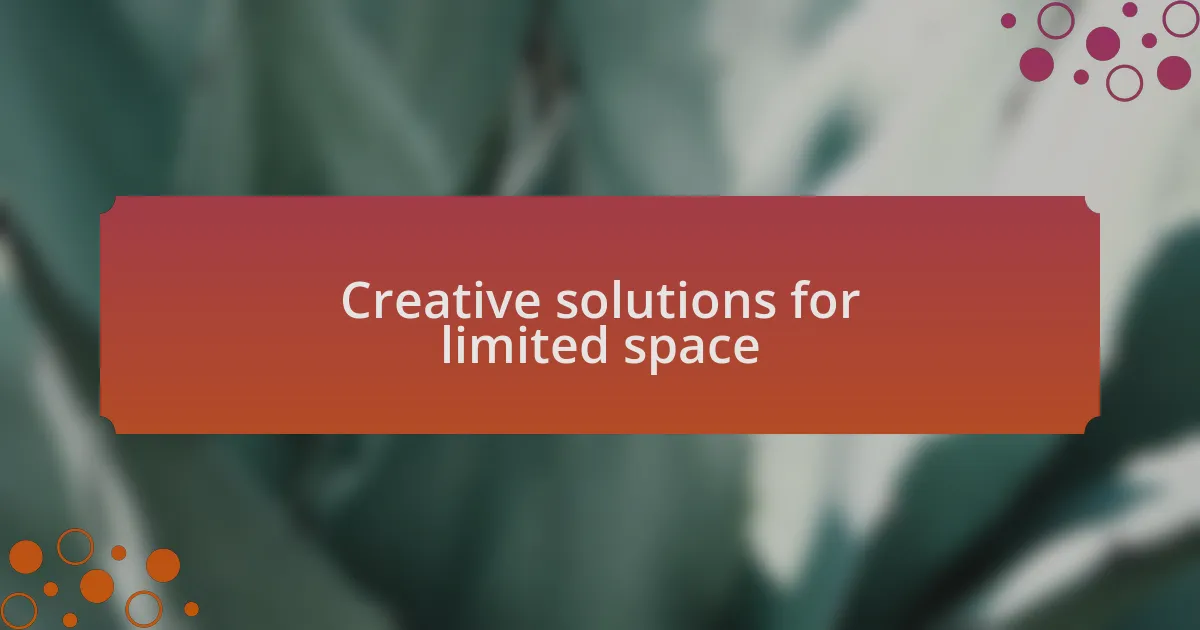Key takeaways:
- Interior landscaping enhances mood and creativity through the strategic placement of plants, transforming spaces into serene environments.
- Designing for small spaces requires innovative solutions, such as vertical gardening and multifunctional furniture, to maximize functionality without overwhelming the area.
- Personal touches and patience in design can significantly elevate the emotional connection and aesthetic of a space.

Understanding interior landscaping
Interior landscaping is more than just placing a few plants in a room; it’s about creating a harmonious balance between nature and architecture. I still remember when I first tried integrating greenery into my studio apartment. I was amazed at how a few strategically placed potted plants transformed my space into a serene oasis, where I could escape the bustle of daily life. How can something so simple bring such a profound sense of peace?
When I think about interior landscaping, I often consider how it influences our emotions and wellbeing. Adding natural elements can boost mood and productivity; I’ve experienced this myself while working from home. Surrounding myself with lush greenery not only brightened my environment but also sparked creativity. Isn’t it fascinating how a mere change in our surroundings can shift our mindset?
Emphasizing the importance of thoughtful plant selection and placement is crucial in this field. Have you ever noticed a forgotten corner of a room that feels dull? I’ve been there, and I found that a vibrant hanging plant created a focal point that breathed life into that space. It’s a beautiful reminder that even the tiniest corners can flourish with the right guidance and care.

Challenges of small space design
Designing for small spaces often presents unique challenges that require creative problem-solving. I vividly recall a project where I had to fit an indoor garden into a tiny bathroom. The limited square footage forced me to think outside the box, using vertical planters to maximize height rather than width. Have you ever felt that pressure to be compact yet functional? It can lead to some of the most innovative design solutions.
Another significant challenge is choosing the right plants that not only fit the aesthetic but also thrive in confined spaces. When I tried incorporating a large potted plant in my small living room, I quickly realized it overpowered the room’s essence instead of enhancing it. Finding the balance between scale and functionality is crucial; how can we create a lush environment without overwhelming our small spaces?
Lastly, maintaining a sense of openness is pivotal in small-space design. I discovered that using mirrors to reflect greenery not only expanded the room visually but also created a sense of depth. It’s amazing how tricks like this can transform an area completely. Have you considered how simple alterations can significantly alter your perception of a space? Embracing these challenges often leads to beautiful outcomes.

Creative solutions for limited space
Many people overlook the potential of using multifunctional furniture in small spaces. I once designed a tiny studio where a coffee table converted into a planting bench. This not only saved space but also added a unique touch to the room’s aesthetic. Have you ever considered how much more usable your space could be with a clever furniture choice?
I remember installing wall-mounted shelves filled with small pots of herbs in a compact kitchen. Not only did this solution utilize vertical space, but it also brought fresh scents and vibrant colors into the cooking area. It’s incredible how vertical gardening can turn an empty wall into an inspiring living feature. Isn’t it rewarding to integrate beauty and utility so seamlessly?
Creating designated zones using lighting and rugs is another effective strategy. In my previous project, I highlighted a small dining nook with warm pendant lights and a colorful area rug, drawing attention without making the space feel cramped. It sparked conversation and gave a cozy atmosphere. Doesn’t it feel wonderful to carve out a unique identity for each tiny corner of your home?

Lessons learned from my experiences
Designing for small spaces has taught me the importance of creativity and adaptability. I once transformed a narrow balcony into a lush oasis by incorporating vertical planters and a small bistro table. Seeing how those few additions completely altered the vibe of the space reminded me that even the tiniest areas can exude charm and comfort.
One significant lesson I’ve learned is the value of personal connection. In another small project, I included a collection of family heirloom planters, which not only added character but also evoked cherished memories. Have you ever thought about how personal touches can elevate a space beyond just aesthetics? It creates a narrative that invites you to engage with the environment deeply.
Lastly, patience is key. I remember the countless trial-and-error moments it took to find the right mix of plants for adequate sunlight and humidity on a compact patio. Each failure was a stepping stone, leading me to better solutions that blended functionality with visual appeal. Doesn’t it often take a bit of experimentation to truly discover what works best in our spaces?